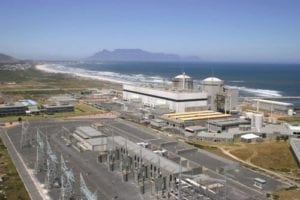
Koeberg power station.
According to Eskom the desalination plant will take care of the country’s sole nuclear power plant thus easing pressure on the City of Cape Town’s water supply.
Velaphi Ntuli, power station manager says the desalination plant is part of Koeberg’s three-pronged water management strategy to address the current water shortages in the Western Cape while ensuring that the plant is able to provide safe and sustainable electricity.
“This strategy includes reducing the power station’s daily water usage, keeping adequate on-site water storage and looking at alternative water supplies (groundwater and sea-water),” he explains.
Responding with a sustainable solution
Ntuli says when the city called on citizens to address the water issue, Eskom responded with a sustainable solution.
“We had to respond with a sustainable solution as a responsible corporate citizen. To this end, we have saved approximately 115 000 kl since June 2017, compared to previous averages. This equates to the City of Cape Town supplying 10.5 kl of water to approximately 11 000 houses for a month. Our water tanks are kept full to cater for emergencies,” Ntuli notes.
Ensuring continuity of supply
The launch of the desalination plant comes following news that the looming Day Zero has been pushed to 4 June from the earlier date of 11 May.
Africa’s only nuclear power station, has an installed capacity of 1 860MW, which provides 50% of the Western Cape’s and approximately 5.6% of South Africa’s energy needs.
It has operated safely and efficiently for 33 years. Koeberg can only operate about two weeks without off-site potable water.
“The desalination solution was therefore quite important to ensure continuity of supply. It is worth noting that Koeberg saves 22 billion litres of fresh water per annum as its condensers are cooled by means of sea water, which is returned to the sea after use,” said Ntuli








